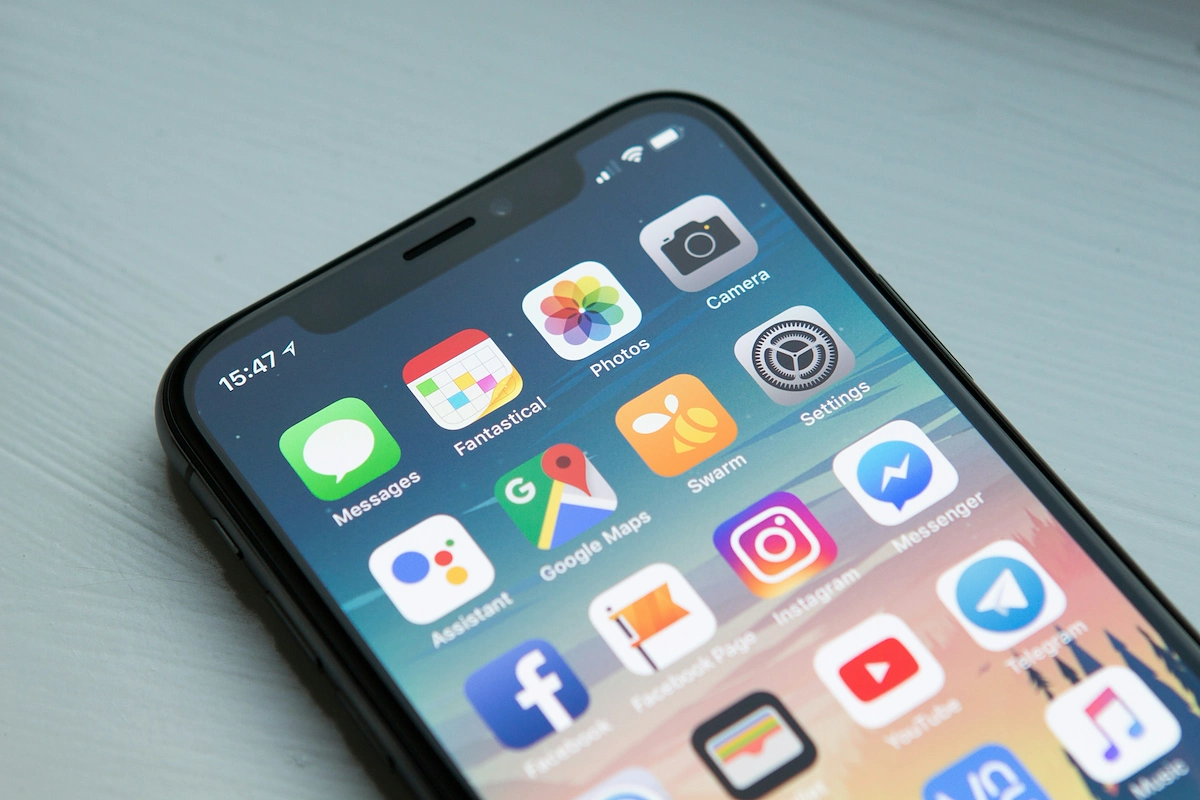Starting a mobile business is an exciting venture that combines your unique skills with some business savvy. The lower overhead and flexibility to meet customers where they are make it an attractive option, but this accessibility doesn't mean an easy road to success.
This guide will take you through the practical steps of validating your business concept, securing funding, obtaining the right licenses, and acquiring your equipment to help you launch a successful mobile business in the U.S.
Step 1: Plan your business and validate the concept
Before you invest a dollar, confirm people will pay for your mobile service. Spend time in areas you plan to serve, like business parks or local markets. Observe foot traffic and talk to potential customers to gauge interest in your idea.
Scout the competition
Use Google Maps, Yelp, and Instagram to find other mobile businesses in your area. Note their services, pricing, and customer reviews. This research helps you find a gap in the market. A common misstep is to copy a competitor's model without a unique value proposition.
Estimate your startup costs
Your initial investment can vary widely. A reliable used van might cost $15,000-$30,000, while a new, custom-outfitted truck can exceed $75,000. Equipment and initial inventory will likely add another $10,000 to $50,000, depending on your specific business type.
Also, budget for branding, like a vehicle wrap ($3,000-$7,000), and administrative costs. These include licenses, permits, and insurance, which typically run from $2,000 to $6,500 in the first year. Mapping these costs out early prevents surprises down the road.
Here are three immediate steps to take:
- Spend a weekend observing customer traffic at locations you plan to operate.
- Create a spreadsheet to track the pricing and services of at least three direct competitors.
- Build a preliminary budget that estimates your vehicle, equipment, and initial inventory costs.
Step 2: Set up your legal structure and get licensed
Choose your business structure
You should consider forming a Limited Liability Company (LLC). This structure separates your personal assets from business debts. For tax purposes, an LLC is a pass-through entity, meaning profits and losses are reported on your personal tax return, which simplifies paperwork.
Once you decide on a structure, you need an Employer Identification Number (EIN) from the IRS. It is your federal tax ID. You can apply for an EIN for free on the IRS website, and the process usually takes just a few minutes to complete online.
Navigate federal, state, and local licensing
With your EIN, register your business with your state's Secretary of State. This officially creates your LLC and typically costs between $50 and $200. After that, focus on local compliance. Contact your city or county clerk’s office for a general business license.
Mobile businesses often need special vendor or itinerant permits. These can cost from $100 to over $500 annually per jurisdiction. A frequent misstep is to assume one permit covers all locations. Always verify permit requirements for each new area you plan to serve.
Here are three immediate steps to take:
- Apply for a free Employer Identification Number (EIN) directly from the IRS website.
- File your LLC formation documents with your state's Secretary of State.
- Contact the city clerk for every town you plan to operate in and ask for their mobile vendor permit application.
Step 3: Secure your insurance and manage risk
You will need a few key insurance policies. General liability covers customer injuries, while commercial auto is for your vehicle. Inland marine insurance protects your equipment during transport. If you hire help, you will also need workers' compensation, which is state-regulated.
Protect your vehicle and equipment
A frequent mistake is assuming a personal auto policy covers business activities; it does not. You need a commercial auto policy with at least $1 million in liability coverage, which can cost between $1,500 and $3,000 annually.
In addition, get inland marine coverage. This policy specifically protects your expensive equipment and inventory while it is in your vehicle or at a job site. This is often overlooked but protects the heart of your business.
Find the right provider
You might want to get quotes from insurers that specialize in small businesses. Consider providers like The Hartford, Hiscox, or Progressive Commercial. They understand the unique risks of mobile operations and can often bundle policies for a better rate.
Here are three immediate steps to take:
- Request a quote for a commercial auto policy, specifying it is for business use.
- Ask potential insurers about bundling commercial auto with inland marine coverage.
- Compare general liability policies from at least two different providers to find the best fit.
Step 4: Choose your vehicle and equipment
Find the right vehicle
Your vehicle is your storefront, so choose wisely. A high-top cargo van like a Ford Transit or Ram ProMaster offers a great balance of space and maneuverability, often costing $20,000-$35,000 used. A larger box truck provides more room but can be harder to park in busy areas.
Forget traditional zoning. For a mobile business, your focus is on municipal codes for vehicle size and where you can operate. Contact your city’s Department of Transportation to confirm rules for commercial vehicle parking and designated mobile vendor zones. Some cities restrict vehicle length or require you to move every few hours.
If you lease, use a commercial dealer. A personal vehicle lease will not cover business use and modifications. You might want to negotiate terms that allow for interior build-outs and vehicle wraps. Some dealers offer lease-to-own options that can help manage initial cash flow.
Outfit your mobile business
Your equipment needs depend on your service. However, nearly all mobile businesses require a reliable power source. A quiet inverter generator like a Honda EU2200i costs around $1,200 and is a popular choice. Many owners underestimate their power needs, so calculate the total wattage of your equipment before you buy a generator.
For a mobile coffee setup, an espresso machine can range from $5,000 to $15,000. A mobile boutique needs durable clothing racks and a payment system, with hardware costing $500 to $1,500. You can find new and used gear on sites like WebstaurantStore or from local commercial suppliers.
Here are three immediate steps to take:
- Contact your city clerk to get a list of approved mobile vending locations and vehicle requirements.
- Get quotes from at least two commercial vehicle dealerships for both leasing and purchasing a van or truck.
- Create an itemized equipment list and compare prices from suppliers like WebstaurantStore and local wholesalers.
Step 5: Set up your payment processing
You need a way to get paid that is as mobile as your business. Most customers expect to pay with credit, debit, or a digital wallet. A clunky terminal or cash-only approach can cost you sales. Look for a system with low transaction fees and no monthly contracts.
For mobile businesses that need to accept payments on-site, JIM offers a streamlined solution. With JIM, you can accept debit, credit, and digital wallets directly through your smartphone—just tap and done. It is particularly useful for quick transactions at markets.
At just 1.99% per transaction with no hidden costs or hardware, it is a strong offer. Other providers often charge between 2.5% and 3.5% plus fees for a separate card reader. The savings can be significant over a year.
Here is how it works:
- Get Started: Download JIM app for iOS
- Make a Sale: Type the sales amount, hit sell, and ask your customer to tap their card or device on your phone
- Access Funds: Your money is available right on your JIM card as soon as the sale is done - no waiting for bank transfers
Here are three immediate steps to take:
- Compare the total cost, including transaction fees and hardware, of two different payment systems.
- Download the JIM app to see how it functions on your phone.
- Decide on your payment terms, such as whether you will require deposits for scheduled jobs.
Step 6: Fund your business and manage finances
Secure your startup capital
SBA Microloans are a strong option for mobile businesses. You can get up to $50,000, with interest rates typically between 8% and 13%. These funds are well-suited for a vehicle down payment or your initial equipment purchase. The application process is often simpler than for larger loans.
You might also consider equipment financing. With this type of loan, the equipment itself serves as collateral, which can make approval easier. This approach helps you preserve cash for other expenses. Lenders like Crest Capital often work with new businesses on these types of arrangements.
Plan your working capital
With funding in mind, let's talk about cash flow. You should have enough working capital to cover at least six months of operating costs. This includes fuel, insurance, and inventory. For most new mobile businesses, this means having $10,000 to $20,000 in the bank before you start.
Many new owners don't account for a slow start. This six-month buffer is your financial safety net, preventing you from making tough decisions if sales are low initially. Also, look into grants like the Amber Grant for women or check with your local Small Business Development Center for regional opportunities.
Here are three immediate steps to take:
- Check your eligibility for an SBA Microloan on the official SBA website.
- Calculate your estimated operating costs for the first six months to determine your working capital needs.
- Research two local or industry-specific grants you could apply for.
Step 7: Hire your team and set up operations
Define roles and responsibilities
Your first hire will likely be a Mobile Associate to help with daily tasks and customer service. Plan for a pay range of $18 to $25 per hour. Many new owners make the mistake of hiring without a formal job description, which often leads to confusion about responsibilities.
Depending on your business, your staff may need specific certifications. For a food business, a Food Handler Permit is a must. For a service like mobile auto repair, you might look for someone with ASE certifications to build customer trust from day one.
Streamline your daily workflow
To manage schedules, you can use an app like Homebase or When I Work. These platforms help you coordinate shifts and track hours, which is useful for a team that is always on the move. Many offer free plans for small crews.
As you grow, keep an eye on your labor costs. A good target is to keep your total payroll between 20% and 35% of your revenue. This ratio helps ensure you remain profitable as you scale your operations and bring on more help.
Here are three immediate steps to take:
- Draft a one-page job description for a Mobile Associate role, outlining key duties.
- Check your state and local health department websites for food handler permit requirements if applicable.
- Explore the free versions of scheduling apps like Homebase or When I Work to see how they fit your needs.
Step 8: Market your business and get customers
Build your digital storefront
Your first marketing move should be to claim your free Google Business Profile. This puts you on the map, literally. Upload at least ten high-quality photos of your vehicle, your work, and your setup. This is how new customers will find and vet you online.
With your profile active, focus on one or two social media platforms where your customers are. For most mobile businesses, Instagram and Facebook are effective. Post your weekly schedule, share customer photos with permission, and use local hashtags to attract nearby followers.
Create local partnerships
You can also partner with established local businesses. For example, a mobile dog groomer could offer services outside a pet supply store. A mobile coffee cart might set up near a busy office complex. This gives you direct access to a built-in audience.
As you market, aim for a Customer Acquisition Cost (CAC) under $50. This means you spend less than $50 in time or money to gain one new paying customer. Many new owners overspend on ads instead of focusing on these low-cost, high-impact strategies first.
Here are three immediate steps to take:
- Set up your Google Business Profile and add professional photos and your service area.
- Identify one complementary local business and draft an email proposing a partnership.
- Plan your first week of social media posts, including your location and a special offer.
Step 9: Set your pricing strategy
Choose a pricing model
For product-based businesses like a coffee cart, cost-plus pricing is straightforward. Calculate your cost per item, say $1.50 for a latte. A typical markup in food service is 200-300%, which would set your price between $4.50 and $6.00.
If you offer a skilled service, like tech repair, consider value-based pricing. Your price reflects the convenience and expertise you provide. A customer might pay $150 for an on-site repair that saves them time and hassle, even if a shop charges $100.
Analyze the market
Look at what your competitors charge on their websites or social media. Many new owners make the mistake of just trying to be the cheapest. Instead, if you offer a superior experience or quality, you can justify a price 15-20% higher than the average.
Your pricing also sends a message. A price that is too low might signal poor quality to potential customers. You might want to test different price points for special offers to see what the market will bear without devaluing your core service.
Here are three immediate steps to take:
- Calculate the total cost for your main service, including materials, fuel, and a 15% buffer for overhead.
- List the prices of three direct competitors and identify one reason you can charge more.
- Set a test price for a single service and offer it to your first ten customers for feedback.
Step 10: Maintain quality and scale your operations
Set your quality standards
To keep customers happy, you need clear standards. Aim for a customer satisfaction score above 90% and a rework rate below 5%. You can track this with simple follow-up surveys. These metrics are your early warning system for quality issues.
Also, formalize your process with a checklist for every job. This ensures consistency, especially once you hire help. Many owners skip this, and their reputation suffers as soon as the team grows. This checklist becomes your brand's playbook.
Know when to grow
Once your quality is consistent, you can plan for growth. A good rule is to hire your first employee when you are booked 80% of the time for three consecutive months. This shows sustained demand, not just a temporary spike.
Adding a second vehicle is a bigger step. Consider this when you consistently turn down 10-15% of profitable jobs due to capacity. A frequent misstep is expanding too quickly. Buying a second van before your processes are solid can double your problems.
To manage this growth, look into software like Jobber or Housecall Pro. They help with scheduling, invoicing, and customer communication. This gets complicated with more people and vehicles on the road, and these systems centralize your operations.
Here are three immediate steps to take:
- Define three quality metrics for your business, like a target customer satisfaction score.
- Set a revenue or booking threshold that will trigger your first hire.
- Demo a scheduling software like Jobber or Housecall Pro to see how it could manage a larger team.
Conclusion
Your mobile business is more than a service on wheels; it is a moving part of the neighborhood. The key is to stay flexible and go where the demand is. With a solid plan in place, you are ready to hit the road and start building your customer base.
And when you make that first sale, getting paid should be simple. You might consider JIM, which lets you accept cards right on your smartphone for a flat 1.99% fee, no reader needed. It keeps your cash flow smooth from day one. Download JIM.















